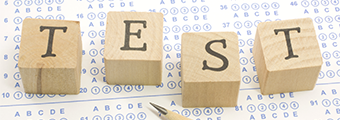What is the difference between fear and phobia?
What is the difference between fear and phobia? It is not always easy to differentiate between the two. Perhaps you are affected by fears in your personal or professional life, but can you really speak of a phobia? When should we start working on it? We often hear people talk about phobias, let’s see together what we mean by the word “phobia” and how you can be accompanied in order to be more serene in certain environments or situations. So, what is really the difference between fear and phobia?

Fear is a normal, occasional emotion that is triggered by a potential real danger. Fear will trigger psychological and physiological mechanisms to protect oneself from this situation (face or flee for example). Thus, if I am faced with a wild animal that is dangerous to me, my whole body will prepare to flee from this situation by providing the necessary blood supply to the different parts of my body. This fear will therefore allow me to protect myself in the face of a real danger. We can compare this fear to a house alarm for example. A properly set house alarm will go off when an intruder enters the house, but will not go off when the cat moves around the house. Fear, like the house alarm, is able to detect real danger.
If this fear is triggered too often, becomes irrational, uncontrollable and very intense, the alarm is no longer adapted to the real danger. It’s like a badly set house alarm, which will go off as soon as the cat goes to the toilet or a dust falls from the kitchen table. In the case of a phobia, the (reptilian) brain will have a wrong interpretation of the situation and will activate the alarm signal for situations that do not have a real and immediate danger.
For example: if you are walking in the forest and while walking there is the bush next to you which moves a little. Your attention will be directed towards this bush, will quickly analyse the situation to see if there is danger or not, if there is no real danger you will continue your way and forget this event. For a person who suffers from phobia: when passing by this bush that moves slightly, his brain will immediately raise an alarm of danger, with a whole bunch of related catastrophic thoughts (I’m sure it’s a wild animal that’s going to jump on me and bite me; it’s a huge snake that’s looking at me and is waiting for only one thing – to jump on me …). The analysis of the situation will be directed only towards the worst that could happen, will trigger all the mechanisms related to the danger, and the person will flee quickly. There is also a good chance that the person will never want to go through places like this again and will therefore start avoiding them. This incident will not be forgotten, but will mark the person as a time when the fear was extremely intense.
What are the most common phobias?
Phobias are classified into 3 main categories:
- Specific phobias: Specific phobias are also called simple phobias. It is an abnormal fear of an object or situation. This category of phobias includes more than 6000 different phobias.
- Social phobia: Is a phobia related to social activities or performance situations. People suffering from social phobia will have an excessive fear of the gaze of others or the judgment of others. In this social phobia we find the fear of speaking, the fear of symptoms related to anxiety (fear of blushing, fear of trembling…)
- Agoraphobia: may be accompanied by panic disorder. People suffering from this phobia will be afraid of being in public places from which they cannot escape in case of need. People will therefore be afraid to go shopping, or even to leave their homes… This agoraphobia can occur in enclosed spaces or, on the contrary, in large areas.
It is difficult to make a classification of the most widespread phobias. The distribution of phobias will not be the same, depending on the studies, the places… However, we regularly find: social phobia, agoraphobia as well as several specific phobias such as acrophobia (fear of heights), zoophobia (fear of animals) and brontophobia (fear of thunderstorms), arachnophobia (fear of spiders), aviophobia (fear of flying)…
What causes phobia?
There are several possible causes for the development of phobias:
- Genetic cause: So far, studies have not been able to demonstrate a genetic factor in the development of phobias
- Educational cause: Parents who suffer from a phobia themselves will transmit a greater vulnerability to their child. If one of your parents has a fear of heights (acrophobia) and has told you throughout your childhood “be careful with it”, “don’t go near it, it’s dangerous”…
- Traumatic causes: The development of phobias can also be explained by traumatic events: If, for example, you have had a serious car accident, this can lead to a high level of anxiety about driving again and thus to amaxophobia (driving phobia). Trauma can also be created by witnessing an event (e.g. seeing a plane crash on television).
It is sometimes very difficult or impossible to identify the causes of the development of a phobia. Not knowing the exact cause or causes does not impact the therapy or its success.
How to overcome the phobia?
Today, one therapy in particular has proven itself in the treatment of phobias. CBTs are cognitive-behavioural therapies. Professionals trained in this type of therapy will accompany you and help you to face up to anxiety-provoking situations. Of course, rest assured, even if your anxiety will rise, the exposures to anxiety-provoking environments are sufficiently gradual that the anxiety does not rise too high. These exposures can be done in different ways: through the imagination, through virtual reality or directly on the ground in reality. While exposing you, he will help you to identify your anxiety, the physical sensations and the catastrophic thoughts that occur during the exposures. The principle of the therapy will be to work on these 3 poles:
- Behaviour: avoid avoidance by staying in the anxiety-provoking situation
- Emotions: the therapist will provide you with different tools to manage your emotions
- Thoughts: Identify unrealistic thoughts and gradually change them into more realistic ones.
The number of sessions required varies according to the person and the problem, but on average it takes about 12 sessions to extinguish the phobia.
Other therapies can be used for phobias such as hypnosis, EMDR…
Drug treatments:
Drug treatments can also be prescribed for phobias. The most successful drugs are antidepressants, as these have a more extensive effect.


